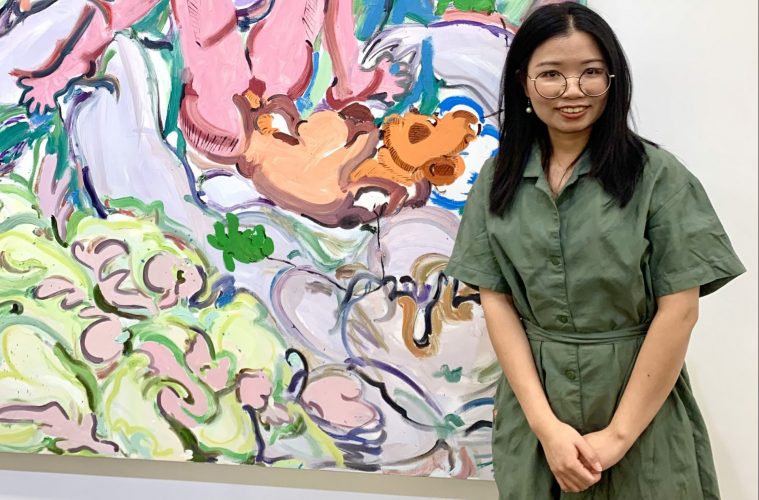
Pascal de Sarthe currently operates galleries in Hong Kong and Beijing, and previously in Paris and San Francisco. He also spent time in the Valley and was instrumental in bringing the iconic Robert Indiana “LOVE” sculpture to Scottsdale.
In 2017, de Sarthe Gallery Hong Kong was named “Best Gallery of the Year in Asia” by CANS (Chinese Art News) Magazine, and in 2023, the World Art Awards named it one of the top 20 international galleries and “Best in China and Hong Kong.”
Pascal’s son Vincent has followed in his footsteps. In 2006, Vincent cut his teeth in the art world with Tony Shafrazi in New York, then went on the help establish de Sarthe Beijing in 2012, along with the gallery’s Asian contemporary program.
When Vincent was stranded in the Valley during the pandemic, he decided to open a stateside location. The establishment of de Sarthe Gallery Scottsdale in the summer of 2022 has significantly impacted the art scene in Phoenix.
Besides exhibiting an esteemed roster of Valley-based artists, including internationally renowned German expat Rotraut, the gallery also brings in work from other de Sarthe locations. This kind of cross-pollination is vital to the continued maturation and eventual global recognition of our artistic community.
Earlier this month, the gallery debuted “From Starry Dreams” by Chinese-born, Berlin-based artist Xinyan Zhang. The exhibition, which continues through May 11, features Zhang’s large, expressionist paintings on canvas. The lush coloration and fleeting dreamlike images make her work especially compelling.
JAVA Editor Robert Sentinery had the opportunity to interview the artist while she was in town for her opening.
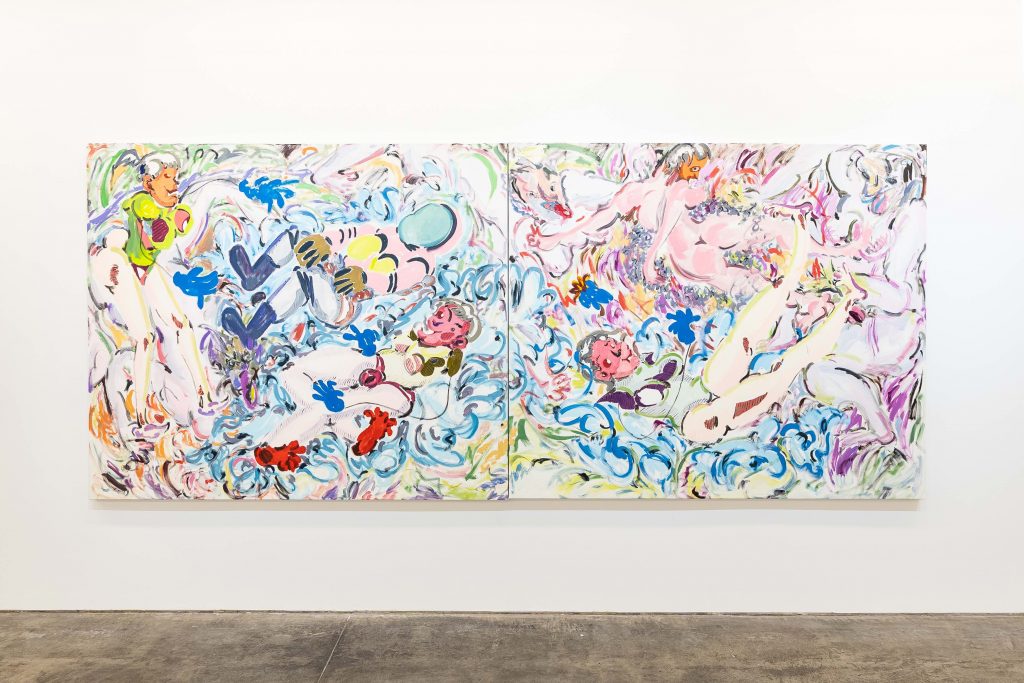
Robert Sentinery: What is it like living in Berlin? The art scene seems very strong. Do you participate and attend many openings? The scene is Phoenix is easy to follow, but I can imagine Berlin might be overwhelming. What do you enjoy when you’re not in the studio?
Xinyan Zhang: Berlin is known as an international art center. Various art exhibitions open every night, and art activities are frequent and rich. When I first arrived in Berlin, I attended gallery openings almost every Friday and Saturday. However, as the number of my own exhibitions has increased, I have begun to feel that time is tight and I am no longer as calm as before. The pace of my daily life is ordered. I go to the studio around nine in the morning and work until seven in the evening, and occasionally work late into night.
Even after I leave the studio, I continue to work at home, including handling emails, reviewing materials, preparing for gallery meetings, etc. I must maintain a daily working state so I continue to create efficiently. Only when I feel visual fatigue, will I take time to visit galleries and museums to relax and adjust my mind.

RS: Tell me about your studio. I know it is in a large repurposed building in East Berlin that now houses over 100 artists. It is built around a central courtyard, so everyone has natural light. What are some of your studio habits (for example, do you listen to music when you paint) and is there much cross-pollination with neighbors?
XZ: This studio was originally the headquarters of the East Berlin government’s security service. Opposite the studio is the famous Gedenkstätte Berlin-Hohenschönhausen Museum. Each of our studios is independent. Not a shared space. I seldom interact with my neighbors because they are too busy.
I like to play electronic music when I’m creating. This is because my work requires the brain to be in a relaxed state. In addition, I also enjoy cooking food in the studio. Despite the limited conditions, this process always reminds me that life is the essence of human existence and art is only a part of it. There is a Lidl supermarket about 100 meters from the studio, and I go there almost every day to buy lunch or fruit. If you look closely at my work, you will see that every brushstroke is full of power. Therefore, I need to constantly replenish my energy to complete the creative tasks of the day. Besides that, I often get lost in thought during the creative process.

RS: At first glance, your paintings seem to be a celebration of sensuality: frolicking bodies, lots of flesh, and Spring-like pastel colors. In your artist statement, you mention that the works are a critical commentary on the decadence of modern society and the growing loss of a spiritual center. Yet the work manages to remain very pleasing to the eye and comfortable to be around.
XZ: The works are full of beauty and meant to give people a sense of pleasure. Society is a huge network in which everyone is tightly bound, and no one can exist alone. Scottsdale seems like a beautiful tourist city. Maybe people here enjoy happiness and joy. This is completely different from what I see in Berlin. The climate in Berlin has been extremely cold this year, with heavy snow covering it for a long time. Many homeless people can only take shelter in train stations. One day, I passed the Lichtenberg station after I got off work and saw a few bouquets of flowers and candles placed in the corner. I suddenly realized that there was always a homeless man in that corner, and he is now gone. When a stranger bid him farewell in this way, I felt a sense of warmth and at the same time a hint of sadness welling up in my heart.
Everyone has their own life, and the world will not stop turning because of the departure of a certain person or group of people. Living is a difficult thing. I don’t want my works to arouse pain in the audience, so I refuse to express the ugliness of humanity in a direct way.
In fact, I have been interpreting and reconstructing social news events from the perspective of women and children, and expressing them in a relaxed and enjoyable way. Art should reflect the current social reality, and tragic art has become a thing of the past.
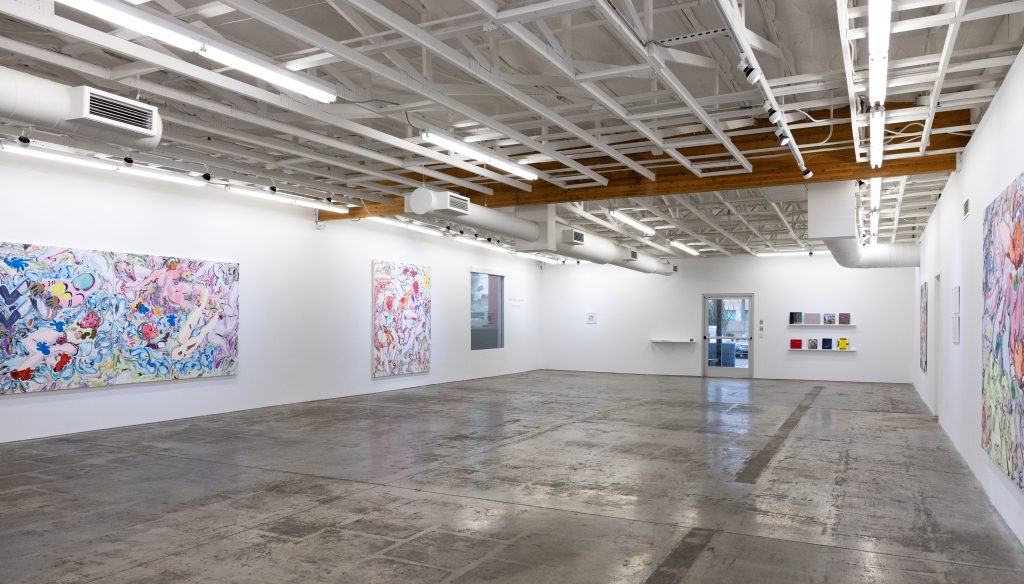
RS: In your artist statement you explain that due to the rapidly changing social and economic conditions in your hometown of Shenzhen during childhood, it wasn’t a particularly safe place for a little girl to grow up. To avoid the dangers, your parents felt compelled to lock you inside when they were gone. Obviously things are quite different there now. How do you think being kept under lock and key as a child has affected you and your artwork?
XZ: The impact of childhood on me is indeed profound and cannot be ignored. Looking back at Shenzhen in the 1990s, security within society was extremely poor, and criminal activities such as robbery and human trafficking occurred from time to time. During that period, my parents ran a restaurant one kilometer away from home. Every morning they left me and my siblings alone while they went to work. At noon, my mother would take an hour to bring us food, and then go back to the restaurant to work until around 7 p.m. I was only about five years old at that time. Every night after dark, we would lie in the crack of the door waiting for our parents to return. For children, the long wait is always stressful. It was during this waiting time that I developed the habit of thinking, observing and fantasizing, and passed the time by doodling. Whenever my mother was late, I would wonder in my mind what caused her to miss the time to come home.
Therefore, you will find many elements of imagination in my works, and there is also a hint of hope in the details.
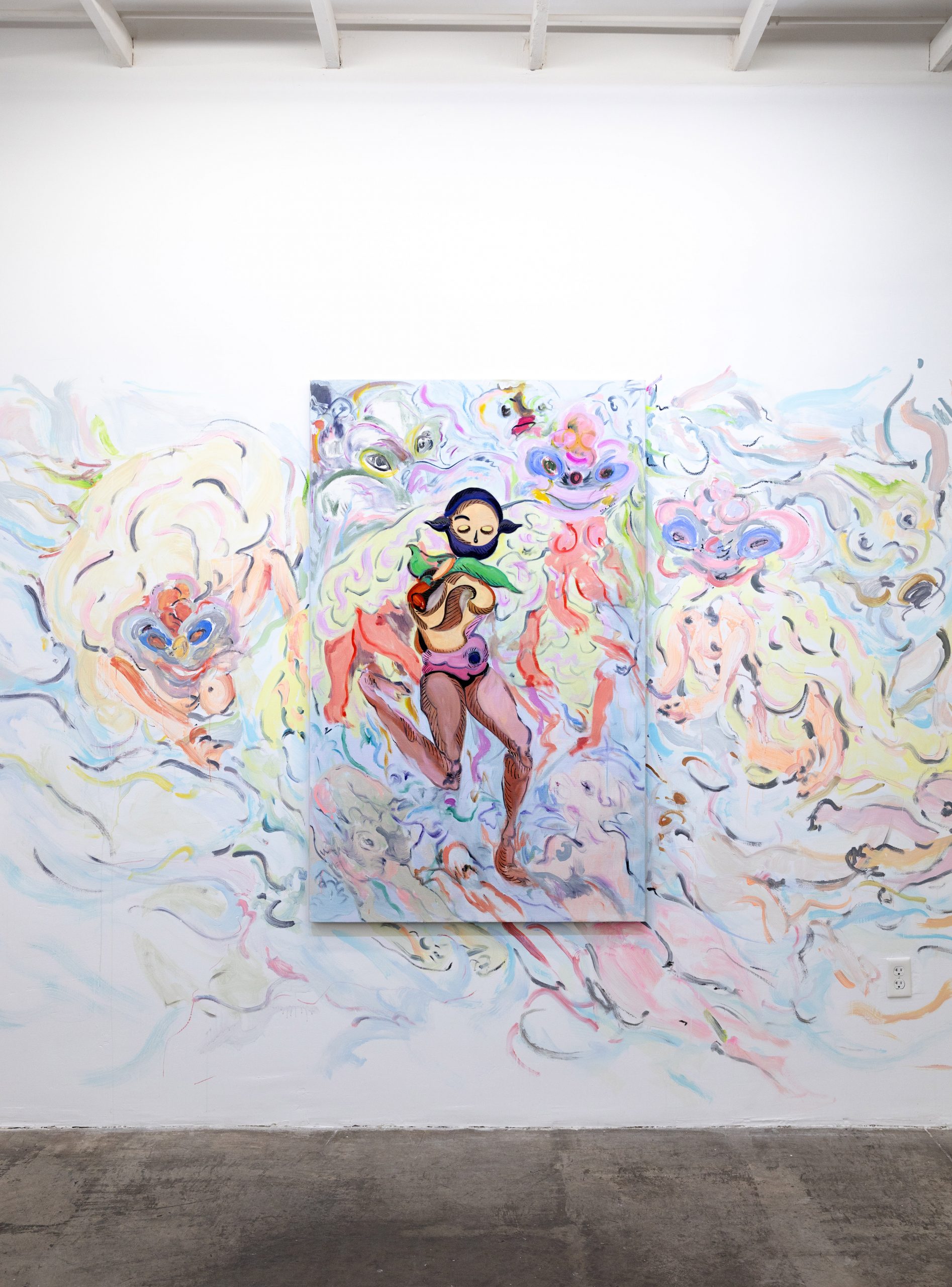
Xinyan Zhang, “Pathetic Sonate” 2022, Oil and Acrylic on canvas, 63″ X 39 1/4″ (with gallery installation 2024) Photo: Jaden Dai
RS: Part of the reason your paintings are so pleasing is because of your unique sense of color. In your artist statement you say that you’ve been sensitive to color since you were a child. Can you elaborate?
XZ: When I was still very young, I started learning professional painting techniques in school. The art teacher taught us about color, and that’s when my talent for color emerged. Whether it was a color gradient or classification, I was always better than my classmates, so I was always praised by the teacher. In high school, I participated in training before the Chinese college entrance examination. Every time the art teacher explained the color course, he would give a demonstration. However, the colors I mixed were richer and more beautiful than the teacher’s. So I was praised for my sensitivity to color. Perhaps because of my innate ability, I can detect colors that others cannot, and I also have a unique feeling of warm and cool colors. When I was a student, I could complete an A4-sized [8.27” X 11.69”] color work in a few minutes. Many times, these colors were not thought out and didn’t follow the rules. I have continued this intuitive approach to color. It is worth mentioning that in the college entrance examination, my color score was close to full marks.
My sensitivity to color is partly related to research on Van Gogh and Matisse during college. I have a particularly strong memory and can easily remember colors I have been exposed to. These colors will be recalled in my brain and applied unconsciously.
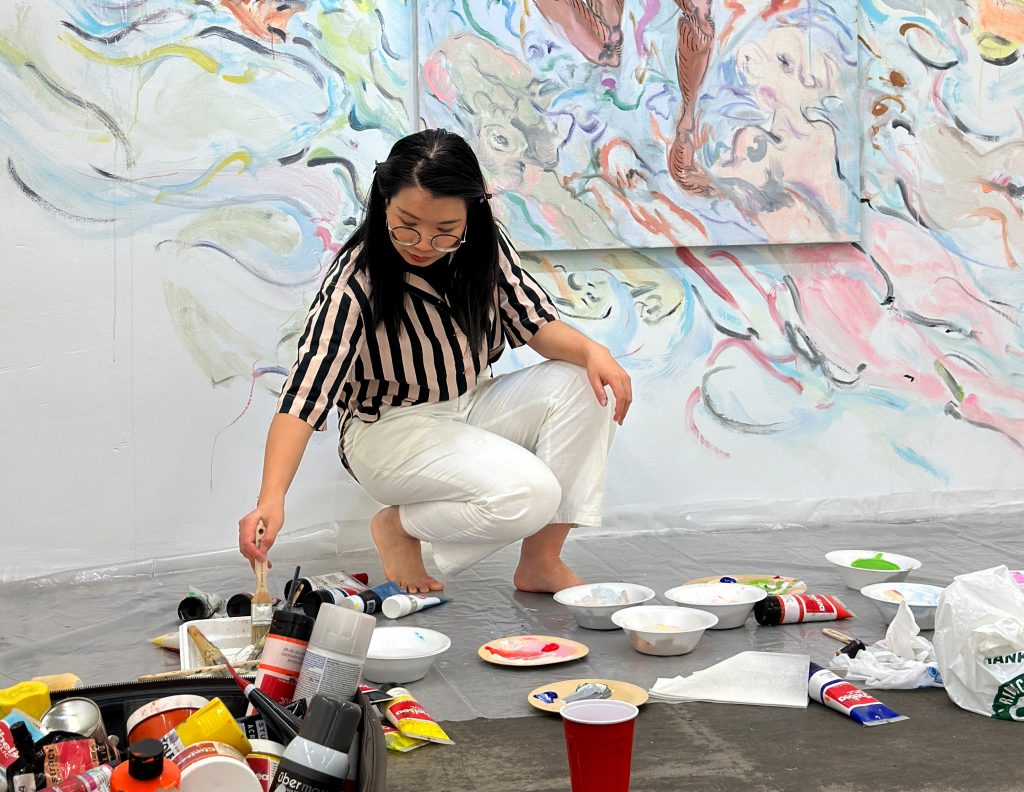
RS: Your work is figurative – literally. There are human bodies strewn throughout the canvases, perhaps reminiscent of Matisse. It also reminds me of the decadent color explosions of French Fauvism. Your work seems grounded in classical Modernism, making you a Post Modernist. Does that label fit for you? Are there other famous artists that particularly inspire you?
XZ: The influence of the Fauves on me cannot be underestimated. I particularly admire the artists Francis Bacon and Martin Kippenberger, the originator of German “bad art” painting. Despite my great admiration for them, my work is not entirely influenced by them. Instead, my work is more like a fusion of Matisse’s romance and Bacon’s horror.
Bacon’s life went through many twists and turns, and his works have always inspired me to create “terrible” works. In the images in my paintings, I try to show the terrible side, which contains thoughts on the ugliness of humanity.
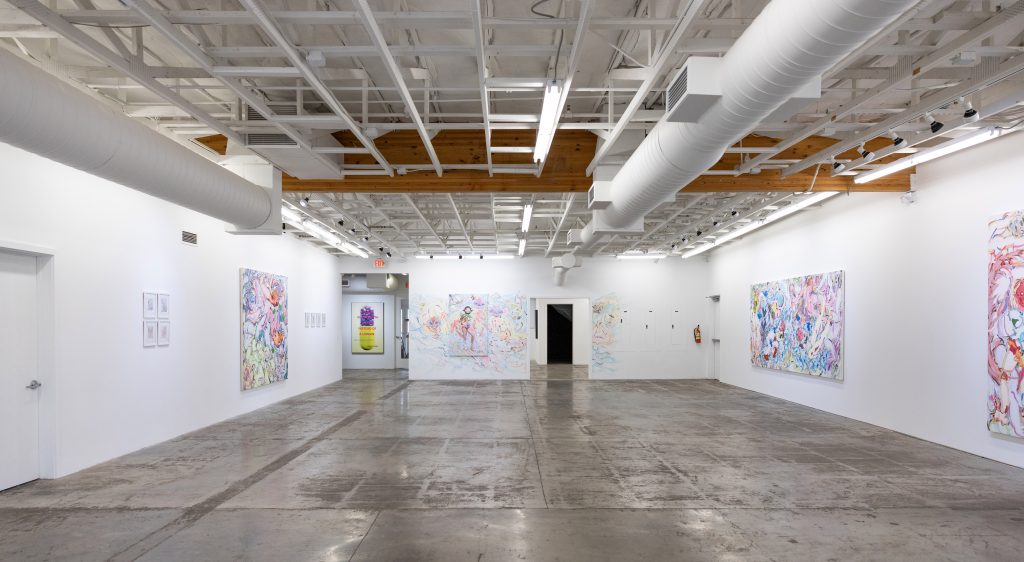
RS: You have already won several important art prizes and had international recognition, with solo shows in Beijing, Berlin, Hong Kong, currently in Scottsdale, and upcoming in New York City. Your career path seems to be on a steep trajectory. How does that feel and can you imagine becoming an art star?
XZ: Unfortunately, I have not had a solo exhibition in Berlin yet. Although some galleries have invited me, I remain cautious. For a solo show in Berlin, I hope to collaborate with a gallery that I really like.
I’m still in the early stages of my artistic career and I’m making progress every year, but I’m still a long way from becoming a star artist and I wish I could move faster. I believe that every artist who goes global has ambitions, and I am no exception. My dream is that one day my works will be recorded in the history of world art, although this may take many years, and may even never be realized. For me, the most important thing at the moment is still to concentrate on each painting.
I once thought about setting up an art school and establishing an artist award. Because in China, there are almost no artist awards that openly call for works. They are usually recommended by committees, making it difficult for many talented artists to gain exposure.

